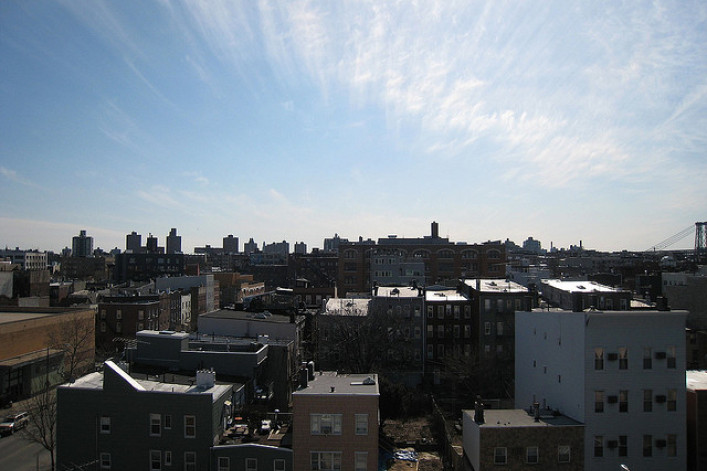Signs of impending neighborhood change, according to Brooklyn experts

Brooklyn has no shortage of cheerleaders these days, but not long ago the borough was in a rut: tens of thousands of manufacturing jobs had evaporated and crime rates spiked. In retrospect, it seems that Brooklyn’s transformation into a global “brand” was inevitable. But for Kings County veterans, there were a few key turning points that portended change.
That was the message at a panel held yesterday at the Javits Center as part of the Urban Land Institute’s multi-day convention on New York City real estate. The panelists, a mix of real estate professionals and quasi-governmental officials, were asked to describe the moment they knew Brooklyn was scheduled for a turnaround. Their answers—obvious markers of change in hindsight, but revolutionary at the time—provide something of a checklist for neighborhood metamorphosis.
Below, four signs that change is coming to an area:
Illegal conversions
Regina Myer, head honcho of Brooklyn Bridge Park and the former director of the Department of City Planning’s Brooklyn office, knew something was up when she found that enterprising young people and artists had taken the “sleepiest train in the system”—that would be the L—one stop from the Lower East Side and settled in Williamsburg. More specifically, her data team discovered 100 commercial buildings that had been illegally converted to living spaces. “This is happening,” Myer remembers thinking. “Williamsburg is going to happen.”
Small companies
Office space in Brooklyn? Back in the day, people assumed this meant housing the “back offices” of big Manhattan firms: the money-making operations of the company would be in Midtown and the less lucrative administrative functions would be across the river. Now, not so much. Investors are buying up former warehouses and factories like 1000 Dean Street in Crown Heights, luring entrepreneurs and a “creative class of makers” as tenants, says Andrew Kimball, the CEO of Industry City, a one-time manufacturing complex in Sunset Park. In other words, that artisanal pickle maker is more like a canary in a coal mine.
Tourists
For ex-Borough President Marty Markowitz, the moment he knew Brooklyn had transformed occurred four years ago on Kent Avenue, when two double decker buses disgorged a wave of Japanese tourists to the Brooklyn Flea. “How sweet it is!” Markowitz quipped.
Bidding wars
MaryAnne Gilmartin, the CEO of Forest City Ratner, the developer behind the Barclays Center and Pacific Park (formerly known as Atlantic Yards), lived in Brooklyn two decades ago but moved away to raise a family. When she decided to buy a home in Brooklyn recently, she lost out on four bidding wars. Finally, she arrived five minutes early to an open house, put in an all-cash bid on the place that day, and closed on the place within 30 days. The lesson? Well, if this kind of thing is happening, a neighborhood may already have changed.






















